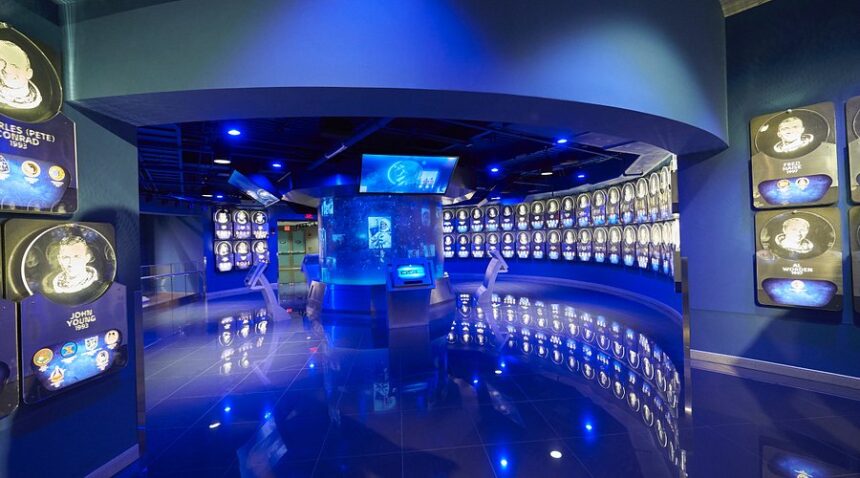Table of Contents
- Introduction to Interactive Hall of Fame Displays
- Tradition vs. Technology: How Halls of Fame Are Changing
- Benefits of Interactive Displays
- Design Elements of Engaging Displays
- Real World Examples of Interactive Halls of Fame
- The Future of Tribute Displays
- Challenges and Considerations
- Conclusion
Introduction to Interactive Hall of Fame Displays
The tradition of commemorating significant historical figures has substantially transformed in recent years. Modern times have witnessed this age-old practice adapt to become an engaging and sophisticated experience, thanks to innovations such as interactive hall of fame displays. These displays are revolutionizing how history is celebrated by combining technology with traditional storytelling methods, creating immersive experiences that captivate diverse global audiences. By actively inviting visitors to participate in history, these digital interfaces offer an interactive, educational, and memorable experience that extends beyond mere observation, engaging the mind and senses on multiple levels.
Traditionally, halls of fame provided quiet spaces for reflection, enabling visitors to contemplate the achievements and memorabilia of revered figures. However, with the integration of technology, these sanctuaries of history are being transformed into dynamic environments. The infusion of digital elements such as touchscreens and multimedia features allows for a newfound level of interaction. Visitors transition from passive spectators to active participants, engaging with content that not only tells a story but immerses them in its narrative. This transformative experience allows for the layering of rich context and connections, enabling a more profound understanding and appreciation of the legacies on display.
Tradition vs. Technology: How Halls of Fame Are Changing
The advent of technology in commemorative spaces reflects a broader cultural shift toward digitization and interactive learning. Traditionally, halls of fame served as solemn, almost sacred spaces where history was preserved with great reverence. The displays were often static, relying heavily on artifacts, plaques, and photographs to tell their stories. These halls emphasized the act of remembrance, presenting history as something to be observed from a respectful distance, rather than actively engaging with it.
However, the rise of interactive technology has radically transformed this experience. Digital tools have broken down the barriers between visitors and exhibits, inviting guests to become participants rather than mere observers. Interactive screens, virtual reality installations, and augmented storytelling techniques allow individuals to experience history in multidimensional ways. This shift enhances the educational value and fosters a personal connection with the narratives, allowing for a deeper emotional and intellectual engagement with the figures and events being honored.
This blending of tradition and technology enriches the visitor experience by layering the past with the present innovations. Rather than diminishing the solemnity of these spaces, technology amplifies their impact, offering new ways to honor and understand historical figures. Interactive exhibits provide opportunities to peel back layers of history, explore lesser-known stories, and appreciate the complexities of the past in ways that static exhibits cannot. Today’s halls of fame offer a vibrant, dynamic environment where history is preserved and experienced.
Benefits of Interactive Displays
Interactive displays offer benefits that extend beyond mere aesthetics, fundamentally transforming how visitors engage with historical narratives. By utilizing multimedia elements such as video, touchscreens, and immersive simulations, these displays encourage active participation rather than passive observation. This transformation aligns with the expectations of a generation raised in digital environments, for whom interaction is an integral part of learning and exploration.
Offering diverse media types and interactive exhibits can help visitors build a more comprehensive and lasting understanding of complex topics. Additionally, interactive learning fosters curiosity, prompting guests to ask questions, seek more profound knowledge, and discuss the presented history.
Visually, interactive displays also offer an aesthetic upgrade, making exhibits more captivating and memorable. Vibrant graphics, engaging animations, and responsive designs draw visitors into the story. This approach increases the time guests spend exploring an exhibit and enhances emotional engagement, leading to more meaningful and lasting connections with the content. As a result, halls of fame become not just places of remembrance but spaces of active learning and communal storytelling.
Design Elements of Engaging Displays
Creating effective interactive displays requires a thoughtful balance between creativity, functionality, and accessibility. Clear visuals, high-quality audio, and intuitive navigation are at the heart of successful design. Designers must ensure that interfaces are responsive and user-friendly, allowing visitors of all ages and abilities to interact effortlessly with the content. Color schemes, font choices, and spatial layouts all make the display inviting and easy to understand.
Beyond basic usability, the emotional resonance of the design is crucial. A well-crafted interactive exhibit doesn’t just inform; it evokes feelings—wonder, admiration, nostalgia, or inspiration. This emotional engagement is achieved through thoughtful storytelling, compelling imagery, and sensory immersion. Museums and halls of fame that incorporate narrative arcs into their displays help visitors form personal connections with the stories, transforming passive viewers into active participants in the historical journey.
Successful interactive displays are seamless extensions of the overall narrative, enhancing the story rather than distracting from it. By focusing on both accessibility and engagement, designers ensure that visitors leave not only better informed but also profoundly moved by the experience.
Real-World Examples of Interactive Halls of Fame
The Pro Football Hall of Fame is a stellar illustration of how technology can enhance the museum experience. Recent renovations have incorporated interactive exhibits that allow visitors to dive deep into football’s rich tapestry of history. Fans can explore player statistics, relive iconic games, and listen to firsthand accounts from legendary athletes. These innovations make the past tangible, offering a personalized exploration of the sport’s evolution and cultural significance.
Interactive displays allow guests to remix classic songs, explore the evolution of musical genres, and even experience virtual performances. According to ZDNET, institutions like the basketball hall of fame also transform visitor experiences with fan-focused technology, creating more immersive and interactive environments. Similarly, these musical exhibits turn the visitor’s journey into an active, creative process, mirroring the dynamic spirit of rock and roll itself.
Other institutions are following suit across the globe. The World Rugby Hall of Fame, for instance, incorporates augmented reality experiences that allow visitors to step onto a pitch alongside historic players virtually. These real-world examples demonstrate that the integration of technology is not just a trend—it is an essential evolution. By leveraging digital tools, halls of fame can offer more prosperous, inclusive, and engaging experiences that deepen appreciation for the legacies they honor.
The Future of Tribute Displays
Looking ahead, the future of tribute displays promises to be even more immersive and personalized. Augmented reality (AR) and virtual reality (VR) are poised to become integral components of the Hall of Fame experience. Through VR headsets, visitors could step into the shoes of a legendary athlete during a pivotal moment or experience a historic concert from the front row. AR applications could overlay historical data onto artifacts, offering real-time insights and storytelling as visitors explore.
Artificial intelligence (AI) also holds tremendous potential for customizing the visitor experience. Imagine AI-guided tours that adapt in real-time to individual interests, offering in-depth explorations of specific eras, themes, or personalities based on visitor preferences. Such personalization would make visits more engaging and ensure that each guest leaves with a unique, tailored understanding of the history presented.
Furthermore, advancements in holography could soon bring life-sized projections of historical figures into the halls, offering interactive conversations and storytelling sessions. These technological possibilities will transform halls of fame into living museums where history is preserved and constantly reimagined and relived.
Challenges and Considerations
Despite the exciting possibilities, integrating interactive technologies into halls of fame is challenging. Financial costs can be a significant barrier, particularly for smaller institutions with limited budgets. The expense of installing, maintaining, and updating interactive displays can be substantial, necessitating strategic planning and often requiring external funding sources or partnerships to remain sustainable.
Additionally, the rapid pace of technological change presents another major hurdle. Today’s cutting-edge technology may become obsolete in just a few years, necessitating continual upgrades to stay relevant and functional. This cycle adds financial pressure and requires institutions to maintain a team with expertise in digital content management, cybersecurity, and user experience design—resources that may not be readily available to every hall of fame.
Accessibility and inclusivity must also be at the forefront of technological integration. Interactive exhibits should be designed to accommodate visitors of all abilities, including those with visual, auditory, or mobility impairments. Inclusive design is not merely a moral imperative; it is essential to creating spaces that truly honor the spirit of commemoration—spaces that welcome and inspire everyone. Addressing these challenges requires foresight, creativity, and a commitment to preserving history in innovative, equitable, and enduring ways.
Conclusion
Interactive Hall of Fame displays represent a transformative shift in engaging with and celebrating historical legacies. By blending traditional commemorative practices’ reverence with modern technology’s immersive power, these spaces become dynamic hubs of learning, connection, and inspiration. They offer visitors the chance to observe history and experience it firsthand, thereby deepening their understanding and emotional resonance.
As technology evolves, the possibilities for creating even more profound and personalized experiences expand exponentially. Future AR, VR, AI, and holography innovations will likely redefine the boundaries of what is possible, offering visitors unparalleled ways to step into history and connect with the legends who have shaped our world. This ongoing evolution ensures that halls of fame will remain vibrant, relevant, and robust places of remembrance for generations.
Ultimately, integrating interactivity into halls of fame is not just about modernization—it is about reimagining the way we honor achievement, preserve culture, and inspire future generations. It ensures that stories of greatness are not static relics of the past but living narratives that continue to shape and enrich our present and future.






